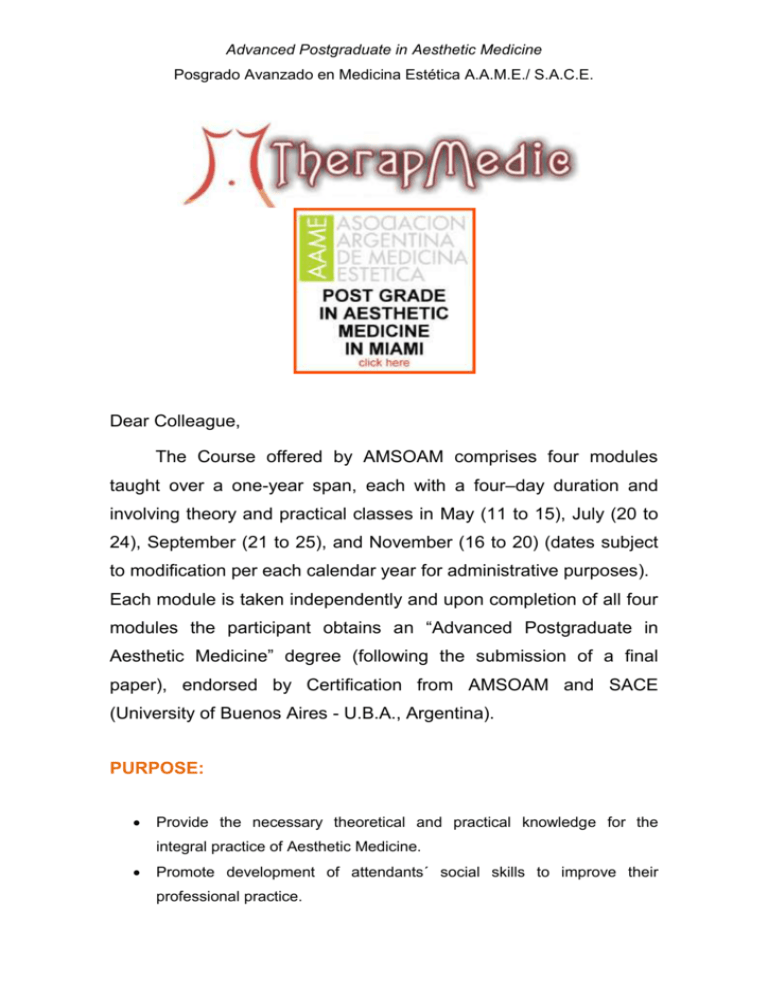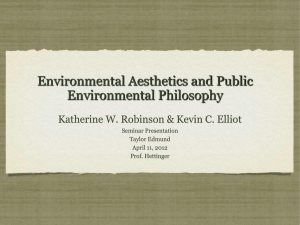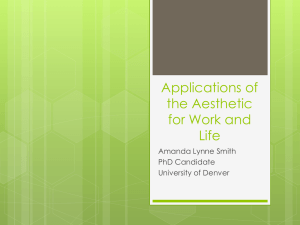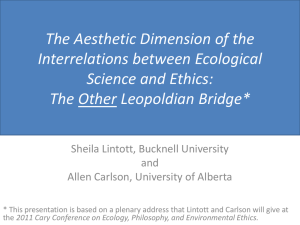purpose - therap medic
advertisement

Advanced Postgraduate in Aesthetic Medicine Posgrado Avanzado en Medicina Estética A.A.M.E./ S.A.C.E. Dear Colleague, The Course offered by AMSOAM comprises four modules taught over a one-year span, each with a four–day duration and involving theory and practical classes in May (11 to 15), July (20 to 24), September (21 to 25), and November (16 to 20) (dates subject to modification per each calendar year for administrative purposes). Each module is taken independently and upon completion of all four modules the participant obtains an “Advanced Postgraduate in Aesthetic Medicine” degree (following the submission of a final paper), endorsed by Certification from AMSOAM and SACE (University of Buenos Aires - U.B.A., Argentina). PURPOSE: Provide the necessary theoretical and practical knowledge for the integral practice of Aesthetic Medicine. Promote development of attendants´ social skills to improve their professional practice. Advanced Postgraduate in Aesthetic Medicine Posgrado Avanzado en Medicina Estética A.A.M.E./ S.A.C.E. Convey the importance of considering the patient as a bio-psycho-social being in aesthetic clinical practice. Encourage the development of clinical treatment criteria by offering different case-solving proposals. Transmit the importance of interdisciplinary team work with health professionals. Provide the necessary guidance during practical case-solving in class. Provide the necessary guidance in person or via e-mail during the completion of the final practical paper. OBJECTIVES: Students are expected to have achieved the following upon completion of the course: The ability to receive, guide and interpret patients seeking an aesthetic solution. Know the regulatory framework that governs the activity in order to ensure safe practice in this field of expertise. Understand the necessary structural and morphological concepts for carrying out aesthetic treatment. Identify basic skin lesions. Differentiate between different types of non-invasive facial and body treatments. Understand the proper use of each of the tools in the consulting room, differentiating between the need for more or less invasive modalities to treat each type of pathology, with the aim of obtaining the best benefit for the patient, favoring the least invasive method. Learn about the need for aesthetic as well as unaesthetic attention. Learn to identify dysmorphophobia and provide proper treatment for it. When and how to refer a patient to another medicinal specialty. Judicious multidisciplinary treatment. Advanced Postgraduate in Aesthetic Medicine Posgrado Avanzado en Medicina Estética A.A.M.E./ S.A.C.E. Understand, listen to and assume a commitment toward the patient under the care of the medical specialist throughout the process of proper diagnosis, treatment and discharge. Module ONE General background Aesthetic clinical treatment, origin and background. Descriptive anatomy of face and neck. Practical anatomy of face and neck. Concept of skin aging. Histopathology. Clinical treatment applied to aging. Semiology. Intrinsic and extrinsic aging. Phototypes and biotypes. Oxidation. Diagnosis. Peelings Weak chemical peeling. Strong chemical peeling. Non-surgical mechanical peeling. Difference with surgical peeling. Related treatment: acid combination. Combination of pathologies. How to combine chemical and mechanical methods. Uses and care. Advantages and limitations. Intradermal Therapy (Mesotherapy) Concept and theory of Intradermal therapy. Manual technique; mechanical technique and variations. Pharmacotherapy with facial, capillary and body protocols; action on pain. Biological intradermal therapy. Complications, precautions and limitations relating to use. Scarring Physiopathology of scarring. Atrophic and hypertrophic scars and keloids. Similarities and differences. Burns. Ulcers caused by pressure and of vascular origin. Advanced care of wounds and its application in Aesthetic Clinical practice. Unaesthetic sequela of wounds; immediate and mediate treatment. Social insertion of patient with sequela – a duty of the medical professional specializing in clinical aesthetics; joint multidisciplinary treatment. Advanced Postgraduate in Aesthetic Medicine Posgrado Avanzado en Medicina Estética A.A.M.E./ S.A.C.E. Botulinum Toxin Functional anatomy of facial expressions. Chemistry of botulinum toxin. Preparation and dilution. Selection of points for applying it. Basic and advanced treatment. Expression lines. Sequela. Hyperhidrosis. Precautions. Complications. Advantages and limitations of each type of intervention. Biological Medicine Definition and fundamentals. Specific drugs and their mode of action. Their use in aesthetics. Revitalization. Concept. Enriched plasma. Obtention. Applications in facial therapy, alopecia, cellulitis, stretch marks, and forms of administration. Combination of different therapies. Protocols. Seminars. Module TWO Fillers Facial anesthetic in aesthetics. Types of anesthesia. Local and regional block techniques. Different types of fillers currently used. Classification and physical properties of each one. Criteria for their use. Hyaluronic acid. Reticulated compounds, Methacrylate. Collagen. Hydroxyapatite calcium. Polyvinyl alcohol, Biopolymer. Techniques for applying fillers. Use of fillers by sectors. Lips. Creases and folds. Wrinkles. Bioplasty: Concept, technique and areas where it is applied. Specific elements and materials. Facial modeling with bioplasty. Nose. Cheek bones. Cheeks. Contour. Protocols combined with other techniques. Advanced Postgraduate in Aesthetic Medicine Posgrado Avanzado en Medicina Estética A.A.M.E./ S.A.C.E. Threadlifting Uses and indications. Types of threads. Characteristics of each type of thread. Selection of the patient. Bi-directional threads. Placement techniques. Suitable planes. Eyebrows, Contour, Cheek bones. Non bi-directional threads. Placement technique. Precautions. Complications. Advanced Techniques: Rhinomodeling with threads. Mentoplasty with threads. Facial Aesthetics Treatment Apparatus High frequency, Radiofrequency and their differences. Pulsed light. Laser. Methods of application. Precautions for their use. Advantages and limitations. Meso Roller. Module THREE Body Mesotherapy Cellulitis: definition, classification and treatment. Integrated pharmacology, selection of the best formula, interactions, adverse effects. Complications. Integration of protocols. Subscission Treatment of cellulite dents with or without biological or other type of filler. Different techniques (with needle, or surgical wire cutters). Phosphatidylcholine- Lipase Definition, modes of action, differences with and without deoxycholate. Indications. Technique for manual or mechanical application. Advanced Postgraduate in Aesthetic Medicine Posgrado Avanzado en Medicina Estética A.A.M.E./ S.A.C.E. Lipase alone or combined; mode of action on flaccidity. Protocols. Fleboaesthetics Esthetic phlebology and lymphology: Surface vein pathology: diagnosis and therapeutic indication. Chemical sclerotherapy. Indications, techniques and complications. Sclerotherapy by Radiofrequency. Laser sclerotherapy and reasons for the present tendency to discard its use. Lymphedema: differential diagnosis and treatment according to origin. Endoluminal laser and surgery. When to refer a vascular patient to a specialist. Electronic Devices applied to Body Esthetics Types: Body Electrotherapy, Russian Currents, Interference Currents, Galvanic Currents, Ultrasound, Combined Ultrasound, Ultracavitation, Sequential Pressuretherapy, Thermotherapy, Ozone therapy, CO2, LPG, Progress made in aesthetic electromedicine. Definitive hair removal. Methods of use, differences in use. Precautions. Module FOUR Physical Lipolysis Techniques Localized adiposis. Anatomy of adipose tissue. Physiology of adipose tissue. Lipolysis and lipogenesis. Hidrolipoclasia (HLC) Ambulatory Mini Lipid Extraction (M.E.L.A.) Lipotransference Indication. Selection of patient. How to obtain the best quality tissue for transfer. Methods, association with P.R.P. Treatment protocols. Patient management. Advanced Postgraduate in Aesthetic Medicine Posgrado Avanzado en Medicina Estética A.A.M.E./ S.A.C.E. Stretch lines and Flaccidity Stretch marks. Stages relative to treatment and combination of treatments. Flaccidity. Definition. Assessment and appraisal. Treatment proposals suited to each case. Treatment of classical areas: Upper arm, tricipital region; Lower leg, adductor and knee. Nutrition Nutrition and obesity. Assessment of nutritional state. Physiopathology of obesity. Fundaments of diet therapy. Nutrition and physical activity. Latest treatments. Body threads Different types of threads, bi-directional and non-bidirectional. Different treatment protocols, Mammary pexis, upper body extremities, Abdomen, Thighs. Methodology Different teaching strategies will be implemented to help students acquire the knowledge, skills and techniques for professional practice. The course includes a segment during which all participants will take active involvement in the analysis of different cases or sources, and will present and discuss the listed reading matter,; and a segment during which teachers will present the theory. Indirect teaching strategies will be used, emphasizing the role of discovery in learning. Students will be exposed to situations designed to present the content of the course. The course will be delivered using material that has been prepared systematically, but at the same time will encourage students to explore and make their own contributions. Advanced Postgraduate in Aesthetic Medicine Posgrado Avanzado en Medicina Estética A.A.M.E./ S.A.C.E. Direct teaching strategies will also be used, such as presentation or demonstration, and teaching by elaborating (conversation, teaching by answering questions). During theory classes, topics will be presented orally and using audiovisual aids to provide students with the necessary knowledge to better understand the related information. Students will be encouraged to participate actively in class and in case analysis. Teachers will make practical demonstrations with real patients, which will be filmed and subsequently analyzed by students. Students will receive printed matter containing the extended form of the topics covered in the course, together with additional mandatory reading and reference material. The purpose of the practical work carried out during the course is to integrate the new knowledge to the knowledge previously acquired during graduate studies, in addition to progress made during the course. This practical work will take on different formats, such as clinical cases, problem solving, questionnaires, simulations, etc. This practical work will be geared toward applied knowledge, reflection and solving of problem cases, including the explanation of criteria used. This work will be carried out in class. Topics will be debated with the professor and will lead to the corresponding self-correction. Small groups will be used to favor the participation of all members in practical work. When the practical coursework has concluded, students will share the conclusions reached by the different groups to promote mutual enrichment and development of social skills, and to favor cooperation between groups and participation by all members. TEACHER PARTICIPATION The teachers in charge of the theory and practical coursework have the backing of the Argentine Association of Aesthetic Medicine (Asociación Argentina de Medicina Estética (A.A.M.E.)) and the Argentine Society of Aesthetic Clinical Treatment (Sociedad Argentina de Clínica Estética (S.A.C.E.)), as well as the Advanced Postgraduate in Aesthetic Medicine Posgrado Avanzado en Medicina Estética A.A.M.E./ S.A.C.E. backing of the University of Buenos Aires (U.B.A). These teachers created the graduate course on Specialist in Aesthetic Medicine, a degree granted by the School of Medicine of the U.B.A. and taught at the Rehabilitation Hospital M. Rocca (Hospital de Rehabilitación M. Rocca) in the Autonomous City of Buenos Aires. TEACHING MATERIAL Classes will be presented audiovisually on screen, and scientific printed matter will be delivered to participants, in addition to material for demonstrations and simulated and supervised practical work. Closed circuit video in Coaching mode. DURATION OF COURSEWORK: Four segments distributed throughout one year Each segment will have a duration of: Four (4) days Each day will include the following distribution: Theory: 3 hs. Practical work: 4 hs. Total duration per segment: Theory: 12 hs. Practical work: 16 hs. Total: 28 hs. Total Segments Theory: 48 hs. Practical work: 64 hs. Total Hours: 112 hs. Advanced Postgraduate in Aesthetic Medicine Posgrado Avanzado en Medicina Estética A.A.M.E./ S.A.C.E. ASSESSMENT: Assessment procedures: Criteria for assessment: Commitment with the coursework assessed in relation to active participation in class, problem and case solving. Use of specific technical vocabulary, proper spoken and written fluency in the subject. Suitable use of instruments and apparel appropriate for the medical sphere, respecting rules of hygiene and biosafety. Display of an attitude of respect toward patients, peers and teachers. Development of active listening skills with patients. Students will be assessed in different instances, and must meet the following requirements: 75% attendance Final oral examination with a minimum pass of 4 (four, on a scale from 1 to 10, where 1 is the lowest and 10 the highest grade), to be obtained by answering 60% of the exam correctly. Students will have one opportunity to retake one partial exam at a date to be specified by the teacher within the week designated for this purpose. This will only be available for students that have completed all the segments of the course. Cost: U$S 3500 per module Non-US residents will have travel expenses covered (up to a maximum of USD1000) Sincerely, Dr. Jorge Grijalba Specialist in Surgery Head of Aesthetic Medicine Service of the Rocca Hospital in Argentina Director of S.A.C.E. Director of AM.SO.A.M. Director of the Graduate Course for Doctor Specializing in Aesthetic Medicine of the University of Buenos Aires (U.B.A.)





